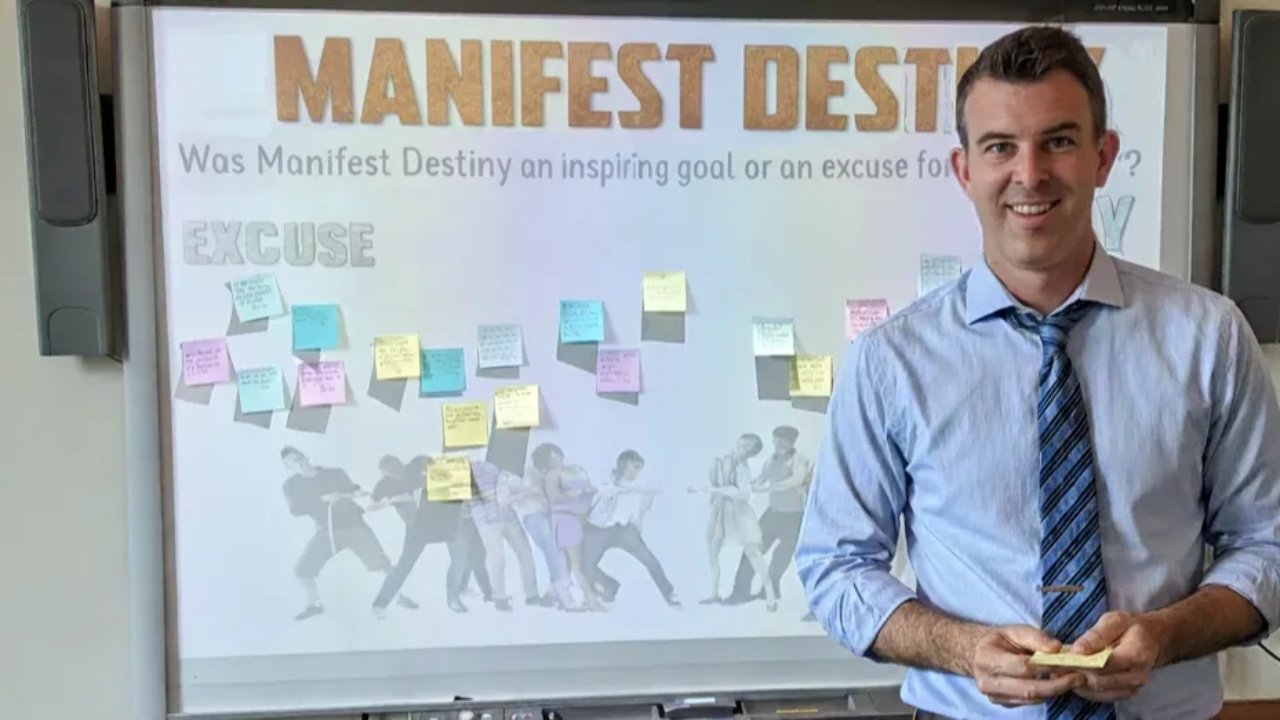Tug of War for U.S. History: Sparking Discussion & Critical Thinking in Your Classroom

If you’ve ever wanted to get your students thinking deeply about history — and talking about it, too — try adding a Tug of War Question to your next lesson.
This simple but powerful strategy helps students form opinions, back them up with evidence, and see how their classmates think about the same issue. It’s one of my favorite ways to make history come alive for middle and high school students.
A Tug-of-War question is an open-ended, opinion-based prompt that doesn’t have a “right” answer. Students are asked to take a stance along a continuum from one extreme to another such as:
What Is a Tug of War Question?
A Tug of War question is an open-ended prompt that students respond to by taking a stance along a line or scale — from one extreme to another.
For example:
“How important was pop culture in ending the Cold War?”
(Not important at all ↔ Very important)
Students write their names or initials on sticky notes and place them along the line on your whiteboard. After everyone’s posted, the class can literally see where opinions fall — a visual “tug of war” of ideas!
Then comes the fun part: discussion. Students explain why they placed their notes where they did, listen to others, and even move their notes if their thinking changes.
Why Use Tug of War Questions?
This strategy helps students:
- Think critically about historical issues that don’t have simple answers.
- Consider multiple viewpoints.
- Practice evidence-based reasoning to support opinions with facts.
- Engage actively with content instead of passively listening.
- Build classroom community through respectful discussion and debate.
It’s quick to set up, adaptable to any topic, and works well in classrooms of all sizes.
How to Set It Up
First, choose a question that connects to your current topic (ex: “Was the New Deal a success or failure?”).
Next, create a Tug of War scale by drawing a line on your whiteboard or use a premade Slide for your projector with a line labeled on each end like:
“Not at all important” ←——————————→ “Very important”
Then, have your students take a stance on the question. Give each student a sticky note, have them write their name and a brief justification or piece of evidence and place it where they believe it belongs on the line.
After all students have placed their sticky notes up on the board, use their responses as a jumping off point for a class discussion. Ask a few students from each side (and the middle) to explain why they chose that spot. Encourage others to respond, agree, disagree, or add additional evidence.
You can also allow students to move their sticky notes if they change their mind during the discussion.
You can do this on your whiteboard with sticky notes or digitally in Google Slides or Jamboard.
Options for When to Use Them
- Warm-Up: Students get a sticky note when they walk in and the question is on the board to start class.
- Exit Ticket: Use one after a lesson to help students reflect on how their understanding has changed.
- Discussion Starter: Launch a Socratic Seminar, or class debate.
- Writing Prompt: Have students turn their position into a persuasive paragraph or short essay supported by historical evidence.
Example Questions by Unit
Here are just a few examples from the full Tug of War Question Bank you can use in your U.S. History classroom:
Colonial America & Revolution
- How justified were the colonists in declaring independence?
- Was the Boston Tea Party an act of patriotism or vandalism?
Constitution & Early Republic
- How democratic was the Constitution when it was first written?
- Did the Federalists or Anti-Federalists have the better vision for America?
Civil War & Reconstruction
- Was the Civil War worth fighting?
- Did freedom really mean equality after slavery ended?
- Was the South treated fairly after the war?
The Roaring 20s
- Were the economic policies of the 1920s setting America up for success or failure?
- Did Prohibition do more harm than good?
The Great Depression
- Did the New Deal go too far or not far enough?
- Did the Great Depression make Americans stronger or more dependent on government?
World War 2
- Was dropping the atomic bomb on Japan justified?
- Was Japanese American internment about security or prejudice?
- Did the Double V Campaign bring real change for African Americans?
Civil Rights Era
- Was nonviolent protest the most effective method of change?
- Did the Civil Rights Movement achieve its goals?
Modern America
- Has technology made life better or more complicated?
- Has the American Dream stayed the same or changed over time?
Want to try some lessons for free?
Try out some free lesson plans and resources for your social studies classroom!
Don't worry, your information is never shared.